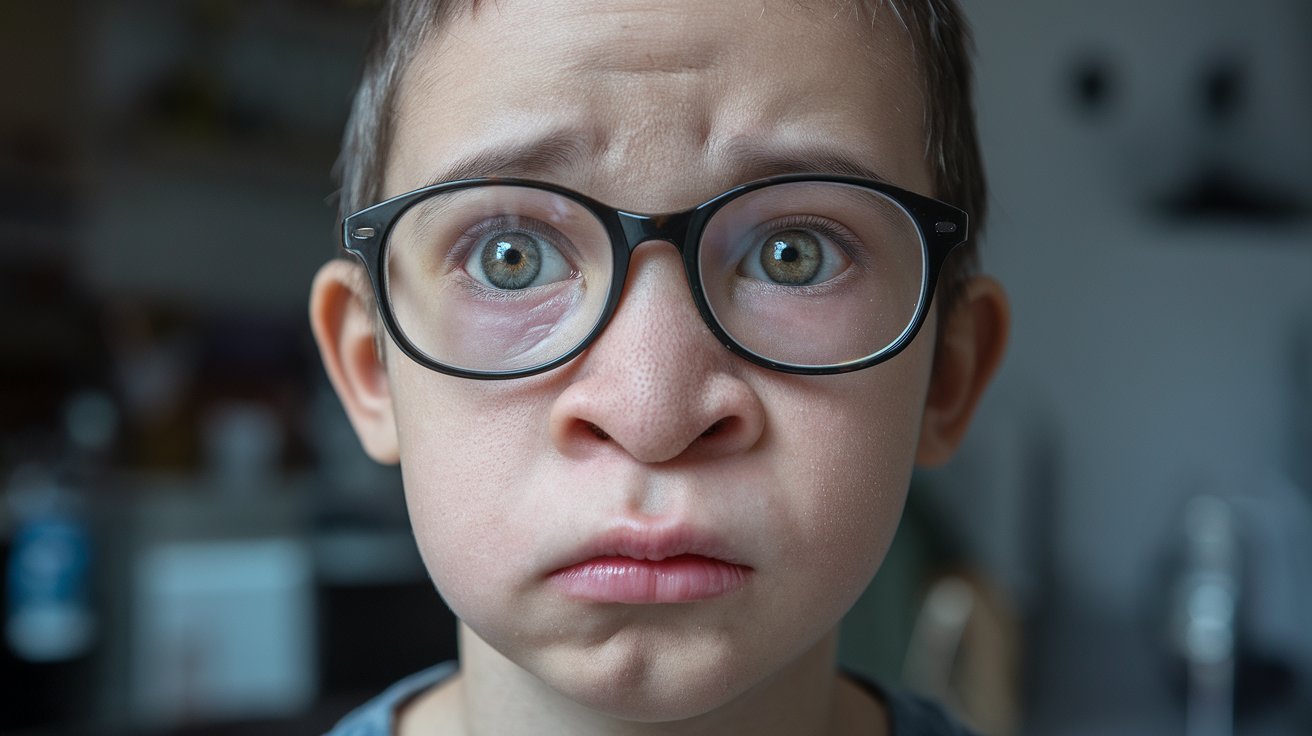
Crouzonodermoskeletal Syndrome is a rare genetic disorder that affects the development of bones and skin. This condition, also known as Crouzon syndrome with acanthosis nigricans, combines features of Crouzon syndrome and a skin condition called acanthosis nigricans. Crouzon syndrome primarily impacts the skull, causing it to fuse prematurely, leading to an abnormal head shape and facial features. Meanwhile, acanthosis nigricans results in dark, thickened patches of skin, often in body folds. This syndrome is caused by mutations in the FGFR3 gene, which plays a crucial role in bone growth and skin development. Understanding Crouzonodermoskeletal Syndrome can help in recognizing its symptoms early, allowing for better management and support for those affected.
Key Takeaways:
- Crouzonodermoskeletal Syndrome is a rare genetic disorder affecting bone and skin development, causing physical features like widely spaced eyes and beaked nose. Treatment involves surgery and ongoing care for a fulfilling life.
- Ongoing research on Crouzonodermoskeletal Syndrome offers hope for future treatments, including gene therapy and stem cell research. Advocacy efforts are driving progress and raising awareness for this rare condition.
What is Crouzonodermoskeletal Syndrome?
Crouzonodermoskeletal Syndrome is a rare genetic disorder that affects the development of bones and skin. It is a variant of Crouzon Syndrome, which primarily impacts the skull and facial bones. Here are some fascinating facts about this condition.
-
Crouzonodermoskeletal Syndrome is caused by mutations in the FGFR2 gene, which plays a crucial role in bone growth and development.
-
This syndrome is inherited in an autosomal dominant pattern, meaning only one copy of the altered gene is needed to cause the disorder.
-
Craniosynostosis is a hallmark of the syndrome, where the skull bones fuse prematurely, affecting the shape of the head and face.
-
Hypertelorism, or widely spaced eyes, is another common feature seen in individuals with this condition.
-
Proptosis, or bulging eyes, occurs due to shallow eye sockets, which can lead to vision problems.
Symptoms and Physical Characteristics
The symptoms of Crouzonodermoskeletal Syndrome can vary widely among individuals. Here are some of the physical characteristics and symptoms associated with the condition.
-
Midface hypoplasia is a common feature, where the middle part of the face appears sunken or underdeveloped.
-
Beaked nose is often observed, giving the nose a prominent, curved appearance.
-
Dental issues such as crowded teeth and malocclusion (misalignment of teeth) are frequently seen.
-
Hearing loss can occur due to abnormalities in the ear structures.
-
Skin abnormalities like acanthosis nigricans, which causes dark, thickened patches of skin, are also associated with the syndrome.
Diagnosis and Treatment
Diagnosing and treating Crouzonodermoskeletal Syndrome involves a multidisciplinary approach. Here are some key points about the diagnosis and treatment options.
-
Genetic testing is essential for confirming the diagnosis by identifying mutations in the FGFR2 gene.
-
Imaging studies like CT scans and MRIs help assess the extent of craniosynostosis and other skeletal abnormalities.
-
Surgical intervention is often required to correct craniosynostosis and improve the shape of the skull and face.
-
Orthodontic treatment can help address dental issues and improve oral health.
-
Hearing aids or other assistive devices may be necessary for individuals with hearing loss.
Living with Crouzonodermoskeletal Syndrome
Living with Crouzonodermoskeletal Syndrome can be challenging, but with proper care and support, individuals can lead fulfilling lives. Here are some aspects of living with the condition.
-
Early intervention is crucial for addressing developmental delays and improving outcomes.
-
Regular follow-ups with a team of specialists, including geneticists, surgeons, and therapists, are essential for ongoing care.
-
Support groups and counseling can provide emotional support and connect families with others facing similar challenges.
-
Educational accommodations may be necessary to support learning and development in school.
-
Physical therapy can help improve mobility and address any musculoskeletal issues.
Research and Future Directions
Research on Crouzonodermoskeletal Syndrome is ongoing, with scientists working to better understand the condition and develop new treatments. Here are some exciting developments in the field.
-
Gene therapy holds promise for treating genetic disorders like Crouzonodermoskeletal Syndrome by correcting the underlying genetic mutations.
-
Stem cell research is exploring the potential for regenerating damaged tissues and improving outcomes for individuals with the syndrome.
-
Clinical trials are testing new surgical techniques and therapies to enhance the quality of life for those affected.
-
Patient registries are being established to collect data and improve our understanding of the condition's natural history.
-
Advocacy efforts are raising awareness and funding for research, helping to drive progress in the field.
Final Thoughts on Crouzonodermoskeletal Syndrome
Crouzonodermoskeletal Syndrome, though rare, offers a fascinating glimpse into the complexities of genetic disorders. Understanding its symptoms, causes, and treatments can help those affected lead better lives. Early diagnosis and intervention are crucial for managing the condition effectively. Genetic counseling can provide valuable insights for families, helping them navigate the challenges that come with the syndrome.
Medical advancements continue to improve the quality of life for those with Crouzonodermoskeletal Syndrome. Researchers are constantly exploring new treatments and therapies, offering hope for the future. Awareness and education about this condition can foster a more inclusive and supportive environment for individuals and their families.
By staying informed and advocating for continued research, we can contribute to a brighter future for those living with Crouzonodermoskeletal Syndrome. Let's keep the conversation going and support the quest for better treatments and understanding.
Frequently Asked Questions
Was this page helpful?
Our commitment to delivering trustworthy and engaging content is at the heart of what we do. Each fact on our site is contributed by real users like you, bringing a wealth of diverse insights and information. To ensure the highest standards of accuracy and reliability, our dedicated editors meticulously review each submission. This process guarantees that the facts we share are not only fascinating but also credible. Trust in our commitment to quality and authenticity as you explore and learn with us.
